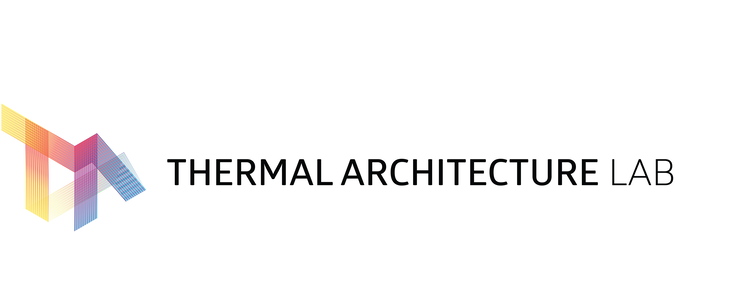The Thermal Architecture Lab focuses on the intersection of thermodynamics, architectural design, and material science. The Lab was founded by Dorit Aviv, Assistant Professor of Architecture at the University of Pennsylvania’s Weitzman School of Design.
The building sector contributes to nearly 40% of total global CO2 emissions, and almost half of the direct energy consumption in buildings is due to mechanical heating, cooling and ventilation demand. As the master-builders in charge of a building design from concept to construction details, architects can take an active role in the effort to make buildings more energy efficient. The Thermal Architecture Lab examines the building’s form and materials from the perspective of thermodynamics, as active agents in the transfer of heat between the human body and its environment. We research novel technologies and design strategies to simultaneously reduce buildings’ energy demand and provide thermal shelter to people in a warming world.
Research Areas
Energy and Ecology
We seek ways to reduce energy consumption in buildings by employing design-based methods for indoor climate mitigation. We research architectural forms and materials that harness renewable environmental forces such as solar radiation, wind, and free convection to instigate heating and cooling processes which impact the thermal sensations of people in space.
Geometry
Our methods and projects bridge building science, mechanical engineering, and architectural design. This unique integration creates new opportunities to explore architectural form-making. We develop simulation tools inspired by computer graphics techniques with the aim to enhance the legibility of energy flows in the built environment. We build full-scale physical prototypes that test how geometry shapes the transfer of heat in space.
Materials
We understand architectural artifacts as material composites that constantly transform their thermodynamic state through interaction with their environments. We use contemporary diagnostic technologies such as thermography, 3D scanning, and Fourier-transform infrared spectroscopy (FTIR) to characterize the response of numerous materials to environmental forces over time. We design ways to utilize the adaptability of materials to mitigate heat rather than rely on mechanical systems.
Internet of Things
We are interested in the ecological feedback loop between people, buildings, and their environments. The immense growth of novel sensing devices, broadly categorized as the Internet of Things (IoT), enables us to acquire real-time data on physical processes. We employ a variety of sensors to gather input data for dynamic building systems; this allows us to design architectural elements that respond to temporal changes in measurable environmental factors such as wind speed and direction, solar radiation, relative humidity, and air temperature.
Human-Centric Design
The work of the Thermal Architecture Lab explores thermal energy flows from the perspective of a person in space. The embodied perception of heat is directly related to both the environment in which people dwell and to the specific way that their body inhabits this environment. Our work on sensing, modeling, and representing the human body aims to develop a richer understanding of the thermal consequences of the interaction between bodies and spaces.

